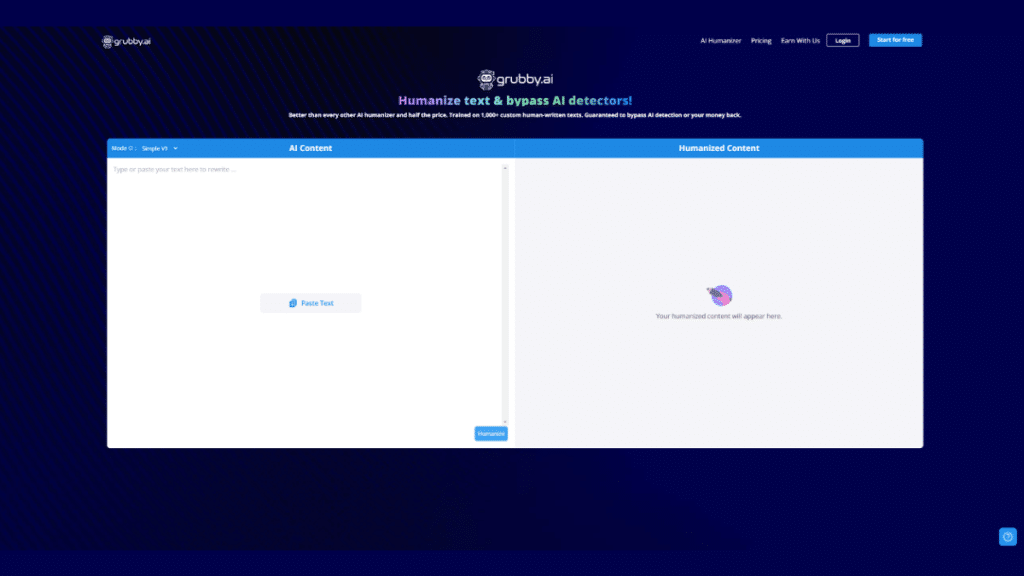In today’s digital world, content is continuously being generated by both human writers and artificial intelligence. For those looking to bypass AI detection mechanisms, the challenge is to craft text that remains authentic, engaging, and natural—without triggering red flags in sophisticated AI detectors. As these systems become more adept at identifying machine-generated content, understanding how to outsmart them is essential. This blog post explores various strategies and techniques designed to help you bypass AI detectors by refining your writing process and altering content patterns for enhanced invisibility.
Common methods to outsmart AI detectors
AI detectors are programmed to look for telltale signs of machine writing. They analyze patterns such as repetitive phrasing, overly consistent sentence structures, and a lack of expressive diversity. One common method to outsmart these detectors is simply to introduce variability throughout your writing. Instead of sticking to a rigid template, allow your sentences to flow in unexpected ways—this might include mixing short, punchy sentences with longer, more intricate ones that capture nuance and emotion.
Another effective tactic is to incorporate idiomatic expressions and colloquial language. These human elements provide a layer of authenticity that machine-generated text often misses. Additionally, diversifying your vocabulary with synonyms and region-specific phrases can further mask the uniformity typical of AI content. Ultimately, by intentionally breaking away from algorithmic patterns, you can make your writing appear more spontaneous and less predictable, thereby reducing the chances of detection.
Refining text for greater authenticity
A cornerstone of bypassing AI detectors lies in ensuring that your text exudes genuine human thought and creativity. Authenticity in writing does not just come from the words you choose, but also from the emotions and personality behind them. One approach is to embrace a more conversational tone in your content. Writing as though you’re engaging in an intimate dialogue with your reader can be surprisingly effective in disguising your work from AI detectors.
To refine your text for greater authenticity, start by revisiting and revising your draft multiple times. In the initial stage, focus on conveying accurate information and clear messaging. In subsequent revisions, work on infusing personality into the writing. This might involve adding personal insights, reflective observations, or even anecdotal evidence that illustrates your point. The small details—like the occasional use of contractions or informal phrases—help to soften the rigid edges of machine-generated language and lend a natural, human flair to your text.
Altering content patterns for invisibility
One of the most reliable ways to avoid detection is by altering the underlying patterns that AI detectors are trained to recognize. AI-generated text often displays certain uniform patterns such as monotonous sentence rhythms or frequent repetition of similar phrase structures. To mask these, intentionally disrupt the regularity in your writing. Start by analyzing your text to identify sections where the language feels repetitive or overly systematic.
Consider varying your sentence structures. This could mean alternating between starting sentences with different parts of speech—such as adverbs, adjectives, or even prepositional phrases. Additionally, switch between different sentence moods: use interrogative sentences to pose questions, exclamatory sentences to express enthusiasm, and declarative sentences to deliver facts. Such changes do not only improve readability but also obscure any patterns that could be flagged by an AI detector.
Another practical strategy is to incorporate transitional phrases and narrative digressions that mimic natural human thinking. For example, a brief pause to reflect on an idea or a quick anecdote can introduce interruptions in the flow that are typical in human writing but less common in machine output. These alterations provide a robust layer of disguise, making it significantly more difficult for AI detectors to pinpoint any machine-like regularity.
Practical techniques for bypassing detection
Implementing practical techniques can make the difference between content that is flagged by AI detectors and work that seamlessly blends in as human-authored. One useful technique is to vary your editing process. Begin by writing a rough draft focused solely on getting your ideas down without worrying about perfection. After completing your initial draft, set the text aside for a short period before coming back to it with fresh eyes. This gap can help you identify and rectify patterns that seem too mechanical.
Another technique is to use multiple rewriting passes that focus on different aspects of your writing. The first pass might target grammar and structure, ensuring your content is clear and coherent. A subsequent pass can focus on injecting personality by rephrasing certain sections, adding descriptive language, or inserting cultural references that give your text a localized feel. Finally, review the document holistically to ensure that the voice remains consistent and fluid throughout.
Peer feedback is also an invaluable tool. Engage colleagues, friends, or even online writing communities to review your work. Their insights can help you spot subtle areas where the text might lean toward an automated style. Finally, make use of digital tools that analyze writing style for tone and readability—they can offer suggestions that further align your writing with genuine human expression.
By applying these practical techniques, you are not only improving the overall quality and authenticity of your content but also increasing its resistance to AI detection systems. The goal is to create writing that is dynamic and full of human nuance, ensuring that it passes as organically crafted.
In conclusion, bypassing AI detectors is about much more than simply masking machine-generated text. It involves a comprehensive approach that includes understanding how detectors work, employing common methods to diversify your writing, refining your text to achieve greater authenticity, and altering content patterns to avoid predictable markers. With practical techniques and diligent editing, you can produce content that remains indistinguishable from human writing, thereby staying one step ahead of detection systems while maintaining high quality and engaging narratives.
